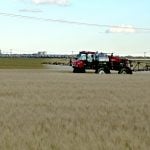Joe Stookey, a cattle producer and recently retired professor at the Western College of Veterinary Medicine in Saskatoon, says no one really wants to cull a pregnant cow, but sometimes you need to look hard at other reasons.
Some years back, one of his students did a project looking at culling, and talked to many ranchers to assess their willingness to cull cows based on maternal behaviour. The survey asked ranchers if they would cull aggressive cows as well as heifers that rejected or abandoned their calves. Most producers said they would readily cull a cow that lacks maternal behaviour, but were less likely to cull an aggressive cow. “If that cow raised a good calf, they didn’t want to cull her,” says Stookey.
Read Also

The Canadian Cattle Association’s international advocacy efforts
Global ag policies affect Canadian food policy, so the Canadian Cattle Association participates in international and domestic forums
“Other producers had no tolerance for a cow that was dangerous to be around when she calved, and they culled the man-eaters. It depended on the operation and how the cattle are managed. Some producers just stayed away from the cows and calves for three weeks and by then those aggressive cows settled down and were less protective and less dangerous. Ranchers tell me that some breeds are worse than others for overly aggressive behaviour, and some cows will hunt and chase people even when their calves are much older.”
The survey asked ranchers what percentage of their cows they thought would charge a person at calving time. “It varied, but one producer with an extensive operation said more than 50 per cent of his cows with a newborn calf would charge at people. He had no intention of culling cows based on aggressive maternal behaviour,” says Stookey.
“It was much easier for people to cull a cow that didn’t accept her calf, than to cull an aggressive cow that raised a good calf. Culling the non-motherly cows makes sense because there’s a good chance they will repeat that behaviour,” he says. There is always extra labour involved in trying to convince a non-motherly heifer to raise her calf.
“It would be useful to be able to predict future maternal behaviour in replacement heifers. So in one research project we scored a bunch of heifers on different behavioural tests, before they were bred and pregnant. We tried to identify those heifers that might give problems later on. But we could not find a behavioural test that predicted what they would be like as mothers.”
You just don’t know, until they actually calve, and many will surprise you.
“We also asked producers if they had any way to know how to predict behaviour at calving. Are the cows that become nasty calm individuals or wild ones? There was no relationship; it was all over the board in the responses we received.” Some that you think will be good mothers and manageable are not, and vice versa.
“We do know, however, that a cow’s maternal behaviour is very repeatable. They generally exhibit the same behaviour the next year when they calve. That’s why heifers that abandon their calves should be culled, and producers rarely give them a second chance,” says Stookey.















